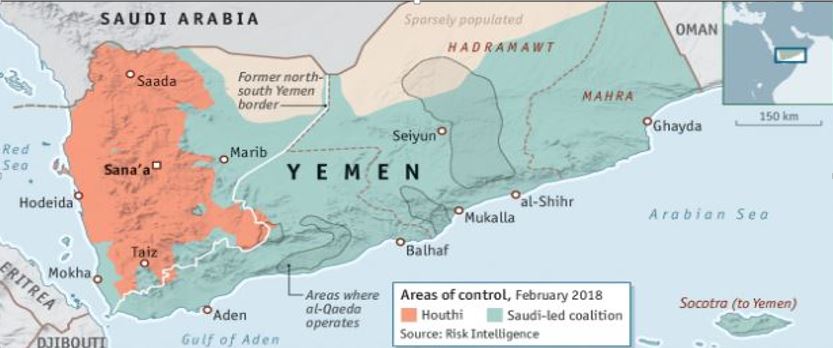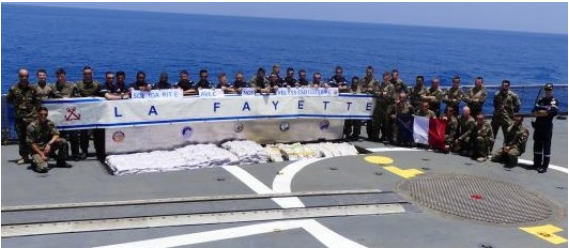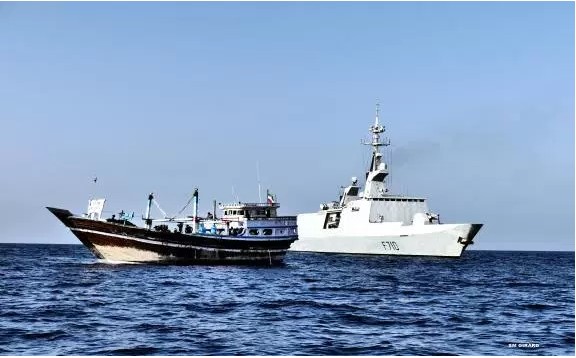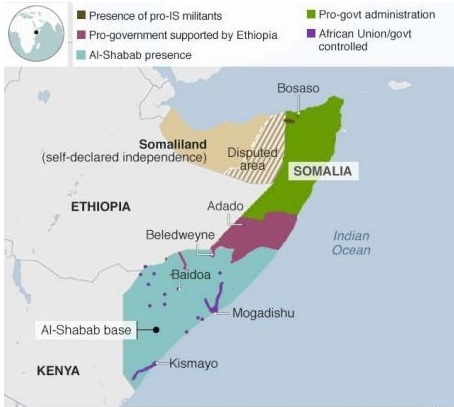Indian Ocean HRA Overview
Continued reported incidents reflect that the HRA remains a threat in regards to piracy activity in the region. Recent efforts to improve the security environment will reduce the impact of Somali piracy, however, continuing deterioration of onshore conditions in Somalia and Yemen such as famine, terrorist groups, a weak central government and poor governance of coastal areas continue to influence piracy in the region. Pirate financiers capitalise on the chaos offering opportunities to local people. Piracy groups onshore Somalia still bear the motivation to try and carry out attacks and still with capability to target merchant vessels. Increasingly, vessels in the HRA are subjected to incidents that appear to be co-ordinated small boat piracy approaches however they choose not to ultimately attack. These incidents are then difficult to classify as attempted piracy or simply as regional patterns of life in the area. However, as seen in recent months there have been numerous attacks and attempted boarding’s ranging from incidents in the Somali Basin, Gulf of Oman, Gulf of Aden and the Southern Red Sea. The increased presence of naval patrols and armed security on board vessels act as a deterrent to the threat of piracy, however those vessels transiting in the area without the presence of armed security remain a significant risk.
Reported Incidents HRA
No incidents to report (UKMTO)
The Combined Maritime Forces (CMF) reported on the 17th April that the La Fayette frigate seized 413kg of heroin during a patrol in support of CMF on the 11th April. La Fayette’s seizure is the third for the French Navy in support of the CTF 150. Together with the Marine Nationale destroyer Jean de Vienne, the 2 ships have confiscated over $370 million of drugs over the last two months.
The frigate detected a dhow of interest and closed in to investigate further. Following a boarding, the vessel found to be without nationality and a search took place locating 413kgs of heroin with a street value of over $96 million. The illegal drugs were transferred to the La Fayette to be destroyed at sea. (Source: Combined Maritime Forces)
Recent large drug seizures in the Arabian Sea highlight the shipments heading in southerly flows are likely to be travelling to regions in East Africa. These regions are used predominantly as transit zones and have a direct impact on the operations of terrorist organisations.
The naval task force seeks to disrupt smuggling networks transferring illicit narcotics from Central Asia through to East Africa.
Yemen Update
This Week
UAE forces intercept drone carrying explosives intended for Yemen targets: UAE forces intercepted a drone carrying explosives believed to be targeting Arab coalition forces deployed along the western coast of Yemen. Military sources stated the intended target was coalition forces along the Red Sea coast making a push for the Yemeni port city of Hudaydah. The Saudi coalition is preparing for a renewed push to capture Hudaydah from the Houthi rebels. (Source: The National)
UN Yemen envoy warns of possible military operation around key port of Hudaydah: Reports of a possible military operation around a major urban centre and key seaport could ruin any hopes of ending the civil war. “We also hear reports that movements of forces in Yemen are on the increase and that the terrible prospect of intensive military operations in Hudaydah may be soon forthcoming.” The UN has previously warned that the Yemeni government and the Saudi-led coalition were preparing an offensive on Hudaydah seaport to stop Houthi rebels from using it to smuggle arms into the country. (Source: VOA)
Ongoing Threat of Violence/Terrorism at Sea off the Coast of Yemen
- Yemen’s civil war has created an environment mirroring Somalia’s lawlessness. The ongoing conflict in Yemen demonstrates how poor security on land has led to violence spilling out into the maritime domain. Houthi rebels continue to control a large amount of Yemen’s red sea coastline.
- In relation to coalition forces advancing towards the Red Sea port city of Hudaydah, currently under Houthi rebel control, increases the risk to shipping in the region. In the past Houthi rebels have repeatedly threatened to attack merchant vessels in the region should coalition forces attempt to re-take Hudaydah port. If coalition forces seized Hudaydah it could be argued this would be a turning point in the civil war as the Houthi rebels would lose their main source of finance through the port in which illegal arms are smuggled.
- Unconfirmed reports surfaced on the 7th January 2018 stating that the Saudi coalition had destroyed at least one Houthi vessel near Hudaydah port after an alleged attack occurred against a Saudi oil tanker. The vessel was reported to be loaded with explosives and controlled remotely.
- The threat of terrorism at sea off the coast of Yemen remains by rebel groups and terrorist organisations such as AQAP remains. Such is highlighted by attacks against the LNG Tanker Galacia Spirit in October 2016 and the MT Muskie a product tanker in May 2017. Both involved the use of explosive laden skiffs, as an attempt to cause major devastation in the critical international shipping passage of the Bab-el-Mandeb.
- It continues to be a persistent threat that merchant vessels may be the subject of a miscalculated attack or as has been suggested recently, possibly threats of a calculated attack.
- The continued proliferation of weapons in Yemen increases the possibility that rebel and other groups may seek to conduct an attack against shipping using WBIED’s.
Somalia Update
This Week
Somalia’s Puntland region asks UAE to stay as Gulf split deepens: Somalia’s semi-autonomous Puntland region urged the UAE not to close its security operations in the country after a dispute with the central government, saying that the Gulf power was a key ally in the fight against Islamist militants. The central government announced this week it was taking over military training run by the UAE. The dispute goes to the heart of an increasingly troubled relationship between Gulf states divided by their own disputes and fractured Somalia, whose coastline sits close to key shipping routes and across the water from Yemen. Analysts have said the complex standoff risks exacerbating an already explosive security situation on both sides of the Gulf of Aden, where militant groups launch regular attacks. (Source: Reuters)
Al Shabaab has been increasingly active in Somalia in recent months. The militant group has been battling the Somali Federal Government (SFG) in an effort to govern Somalia. Since 2013, al Shabaab pledged allegiance to al-Qaeda attracting the United States to execute raids and airstrikes against the group. However increased US airstrikes have not enabled African Union Mission (AMISOM) and Somali security forces to gain enough momentum against the terrorist group, al Shabaab has not suffered any great loss of territory or significant casualties from the airstrikes. Al Shabaab continues to maintain strongholds in southern and central Somalia and continue to carry out attacks against military and civilian targets. Somalia is a country whereby tribal loyalties are stronger than national ties. The SFG and Somali forces lack legitimacy outside of Mogadishu. Further to this, al Shabaab further exemplifies the issue of famine, terrorism and corruption making the prospect of stability in Somalia in the near future bleak. Al Shabaab is likely to maintain its present operational tempo in 2018 and further expand its territory in central and southern Somalia.
Piracy
In 2017 between March and May, five vessels were hijacked in Somali waters, whilst this was reported by many to be a resurgence of Somali piracy, it can be assessed as more likely to be a result of a permissive environment during the inter-monsoon period allowing skiffs and PAGS to operate with ease. Until the deep rooted issue of piracy in Somalia are resolved, piracy will continue to be a threat. 2017 saw the worst drought Somalia has seen in 40 years, this coupled with the struggling government and extreme militant violence has brought 6.7 million people into crisis. Pirate financiers capitalise on the chaos offering opportunities to local people. Pirate groups are known to operate in the coastal regions of Puntland, namely Eyl and further south in the Galmudug region, namely Hobyo. It is needless to say, as the increased instability in Somalia continues, it will serve as a permissive environment for piracy operations with an ongoing threat to shipping in the region.



